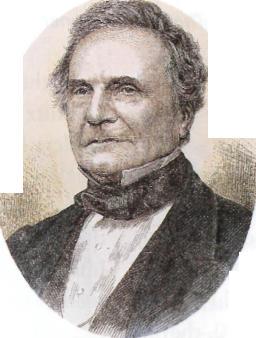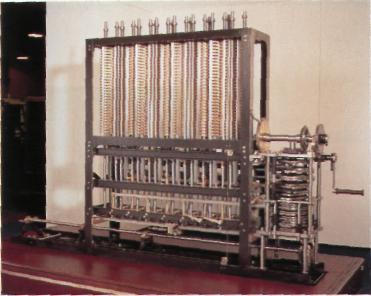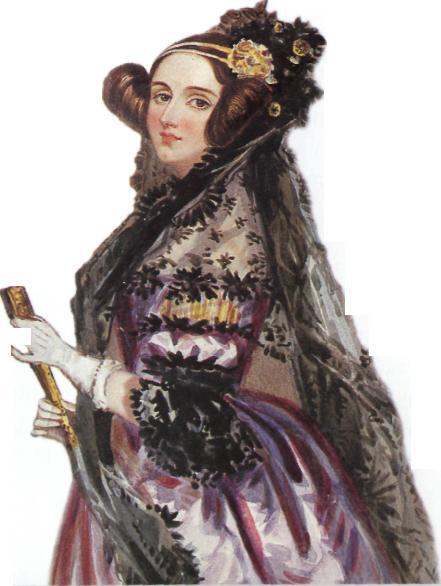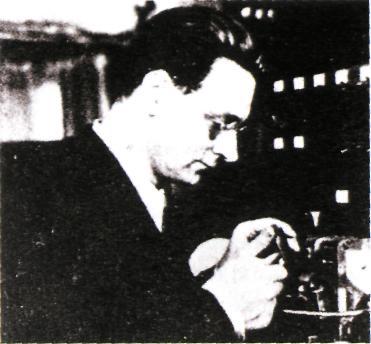
- •Contents
- •Передмова
- •Unit 1 The computer age
- •In the beginning
- •I read the text. Are these true (t) or false (f)? Correct the sentences where it is necessary.
- •Unit 3 The first computers
- •I Answer the following questions:
- •II Put the sentences in the right order:
- •III Translate the text.
- •IV Write the annotation to the text. Unit 4 Alan Turing
- •I Answer the following questions to the text:
- •II Put the sentences in the right order:
- •III Translate the text
- •IV Write the annotation to the text.
- •V Read Chapters 3 and 4, then circle a, b or c:
- •Unit 5 The history of the pc
- •I Answer the following questions:
- •II Complete the sentences:
- •III Put the sentences in the right order:
- •IV Translate the text
- •V Write the annotation to the text. Unit 6 Bill Gates and Microsoft
- •I Put the sentences in the right order:
- •II Put five questions to the text:
- •III Translate the text
- •IV Write the annotation to the text.
- •Man versus computer
- •Part one
- •I Read the text. Are these sentences true (t) or false (f). Correct the sentences where it is necessary.
- •II Write five-six questions to the text:
- •III Translate the text
- •IV Write the annotation to the text. Unit 8 Man versus computer
- •I Are these sentences true (t) or false (f). Correct the sentences where it is necessary.
- •II Put the sentences in the right order:
- •III Translate the text
- •IV Write the annotation to the text.
- •The Internet
- •Part one
- •I Put the sentences in the right order:
- •II There is a special kind of language which people use to save time. There are some samples of it. Can you guess them? Translate them.
- •III Translate the text
- •IV Write the annotation to the text.
- •Unit 10
- •The Internet
- •Part two
- •I Answer the following questions:
- •II Translate the text
- •III Write the annotation to the text. Unit 11 Getting the message
- •Unit 12 Computer games
- •I Circle the correct words:
- •II Write seven questions to the text:
- •III Put the sentences in the right order:
- •IV Translate the text
- •V Write the annotation to the text. Unit 13 'I Love You' (and other viruses)
- •Unit 14 Computer crime
- •Unit 15 The Future
- •Glossary
- •050101 «Комп’ютерні науки»
- •65082, Одеса, вул. Дворянська 1/3
Unit 3 The first computers
 The
word 'computer' used to mean a person, not a machine. In the
nineteenth century, builders and technicians needed to know the
answers to very difficult calculations in order to do their work.
They did not have time to do these calculations themselves, so they
bought books of answers. The people who did the calculations and
wrote the books were called computers. In the 1820s, a British
mathematician called Charles Babbage invented a machine that did very
difficult calculations automatically. He called machine a Difference
Engine. He began to build his machine, but did not finish it because
he had a better idea. (Babbage never finished anything – he always
had a better idea and started working on something new.) In fact,
more than a hundred and fifty years later, some technicians from the
Science Museum in London built Babbage's Difference Engine.
The
word 'computer' used to mean a person, not a machine. In the
nineteenth century, builders and technicians needed to know the
answers to very difficult calculations in order to do their work.
They did not have time to do these calculations themselves, so they
bought books of answers. The people who did the calculations and
wrote the books were called computers. In the 1820s, a British
mathematician called Charles Babbage invented a machine that did very
difficult calculations automatically. He called machine a Difference
Engine. He began to build his machine, but did not finish it because
he had a better idea. (Babbage never finished anything – he always
had a better idea and started working on something new.) In fact,
more than a hundred and fifty years later, some technicians from the
Science Museum in London built Babbage's Difference Engine.

The difference Engine
Charles
Babbage
It is still in the museum today. The machine weighs about three tonnes, and it is nearly two metres tall and three metres wide.
And it works: in the early 1990s, it did a calculation and gave the right answer – 31 digits long! Babbage did not finish making the Difference Engine because he started work on a machine called an Analytical Engine. The Analytical Engine could do more: for example, it had a kind of memory. This meant that it was possible to write programs for it, building on each answer and doing more and more difficult calculations. For this reason, the Analytical Engine is often seen as the first real computer. However, Babbage never finished building this machine either!
 A
woman called Ada Lovelace worked with Babbage. She was the daughter
of Lord Byron, a famous English writer. Ada was an excellent
mathematician and understood Babbage's ideas (most people did not).
She
A
woman called Ada Lovelace worked with Babbage. She was the daughter
of Lord Byron, a famous English writer. Ada was an excellent
mathematician and understood Babbage's ideas (most people did not).
She
knew that she could do amazing calculations with the Analytical Machine, and she wrote a program
for it. Although the machine was never built, Ada Lovelace was still the first computer programmer in the world. In 1979, a modern computer programming language was named ADA.
Babbage's ideas were ahead of their time.
S lowly,
over the next one hundred years, inventors began to build better
calculating machines. One of the best inventors of the 1930s was a
German called Konrad Zuse. In
1938, he built his first machine, the Z1, in his parents' living room
in Berlin. His later machines, the Z3 and Z4, were like modern
computers in many ways. They used only two digits (0 and 1) to do all
the calculations. Also, Zuse wrote programs for his machines by
making holes in old cinema film. When he put the film through the
machines, they could “read” the programs and do very long and
difficult calculations.
lowly,
over the next one hundred years, inventors began to build better
calculating machines. One of the best inventors of the 1930s was a
German called Konrad Zuse. In
1938, he built his first machine, the Z1, in his parents' living room
in Berlin. His later machines, the Z3 and Z4, were like modern
computers in many ways. They used only two digits (0 and 1) to do all
the calculations. Also, Zuse wrote programs for his machines by
making holes in old cinema film. When he put the film through the
machines, they could “read” the programs and do very long and
difficult calculations.
Tasks
I Answer the following questions:
-
What did the word “computer” used to mean?
-
Who invented a Difference Engine?
-
Who build the Difference Engine?
-
Who wrote a program for the Analytical Machine?
-
In what way did Konrad Zuse write programs for his machines?
-
What could Zuse machines do?
